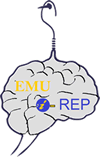JavaScript is disabled for your browser. Some features of this site may not work without it.
| dc.contributor.advisor | Kunt, Mehmet Metin (Supervisor) | |
| dc.contributor.author | Efekan, Efkan | |
| dc.date.accessioned | 2024-09-03T09:39:52Z | |
| dc.date.available | 2024-09-03T09:39:52Z | |
| dc.date.issued | 2020-09 | |
| dc.date.submitted | 2020-09 | |
| dc.identifier.citation | Efekan, Efkan. (2020). Classification Performance Evaluation of Traffic Accident Data Using Machine Learning. Thesis (M.S.), Eastern Mediterranean University, Institute of Graduate Studies and Research, Dept. of Civil Engineering, Famagusta: North Cyprus. | en_US |
| dc.identifier.uri | http://hdl.handle.net/11129/6099 | |
| dc.description | Master of Science in Civil Engineering. Institute of Graduate Studies and Research. Thesis (M.S.) - Eastern Mediterranean University, Faculty of Engineering, Dept. of Civil Engineering, 2020. Supervisor: Assoc. Prof. Dr. Mehmet Metin Kunt | en_US |
| dc.description.abstract | Road traffic accidents, which are a global problem, cause huge losses both in economic and social areas, while traffic accidents lead to casualties, injuries and death. According to the World Health Organization report, more than 1.25 million deaths occur each year as a result of traffic accidents, on the other hand, non-fatal accidents affect more than 20 million people. Although Great Britain has the world's safest road records, research shows that 5 people are killed every day in road traffic accidents. In order to identify the most effective factors related to accidents, researchers have developed and effectively used large data sets containing various information about previous accidents. In this academic study, using the recorded traffic accidents data of Great Britain, statistical models will be used to identify and classify the parameters causing traffic accidents. a detailed procedure of injury severity prediction using the Support Vector Machine, k-Nearest Neighbour and Gaussian Naïve Bayes classification techniques will be discussed. Furthermore, feature selection methods including Chi-square, Random forest, Support vector machine recursive feature elimination and Light gradient boosting machine, will be debated to identify the most important attribute of the traffic accidents. According to the latest available data set in 2018, traffic accidents data, accuracy rate of 77.40% was calculated with the k-Nearest Neighbour method, 78.98% with SVM-RBF and 77.71% with Gaussian Naïve Bayes. As a result of the classification for the severity of casualty, SVM-RBF and GNB often performed the best, giving the same result, at a rate of 87.80%. Classification for vehicle type, the best accuracy value in both test data and training data was obtained with SVM-RBF method with 84.53% and 84.36, respectively. While the percentage of accuracy in the KNN and GNB classification methods for the test phase was 82.20% and 83.33%, respectively, it was calculated as 82.24% and 82.95%, respectively, as a result of the analysis made for the training phase. Although there are close answers with three classification methods, SVM RBF classification shows a better performance than other classification tools. | en_US |
| dc.description.abstract | ÖZ: Küresel bir sorun olan trafik kazaları hem ekonomik hem de sosyal alanlarda büyük kayıplara yol açarken trafik kazaları zayiat, yaralanma ve ölüme neden olmaktadır. Dünya Sağlık Örgütü raporuna göre, trafik kazaları nedeniyle her yıl 1,25 milyondan fazla ölüm meydana gelirken, ölümcül olmayan kazalar 20 milyondan fazla kişiyi etkiliyor. İngiltere dünyanın en güvenli yol kayıtlarına sahip olmasına rağmen, araştırmalar trafik kazalarında her gün 5 kişinin öldüğünü gösteriyor. Kazalarla ilgili en etkili faktörleri tanımlamak için araştırmacılar, önceki kazalar hakkında çeşitli bilgiler içeren büyük veri setleri geliştirmiş ve etkin bir şekilde kullanmışlardır. Bu akademik çalışmada, Büyük Britanya'nın kayıtlı trafik kazaları verileri kullanılarak, trafik kazalarına neden olan parametreleri tanımlamak ve sınıflandırmak için istatistiksel modeller kullanılacaktır. Destek Vektör Makinesi, k-En Yakın Komşu ve Gauss Naïve Bayes sınıflandırma tekniklerini kullanarak yaralanma şiddeti tahmininin ayrıntılı bir prosedürü tartışılacaktır. Ayrıca, trafik kazalarının en önemli niteliğini belirlemek için Ki-kare, Rastgele orman, Destek vektör makinesi özyinelemeli özellik eleme ve Hafif gradyan güçlendirme makinesi gibi özellik seçim yöntemleri tartışılacaktır. 2018 yılında mevcut olan en son verilere göre, trafik kazaları verileri %77,40 doğruluk oranı k-En Yakın Komşu yöntemiyle %78,98 SVM-RBF ile ve %77,41 ile Gauss Naïve Bayes ile hesaplanmıştır. Yaralanmanın ciddiyeti için yapılan sınıflandırma sonucunda SVM-RBF ve GNB genellikle en iyi performansı göstererek aynı sonucu %87,80 oranında verdi. Araç tipi sınıflandırması hem test verilerinde hem de eğitim verilerindeki en iyi doğruluk değeri sırasıyla %84,53 ve %84,36 ile SVM-RBF yöntemi ile elde edilmiştir. Test aşaması için KNN ve GNB sınıflandırma yöntemlerindeki doğruluk yüzdesi sırasıyla %82,20 ile %83,34 iken, eğitim aşaması için yapılan analiz sonucunda sırasıyla %82,24 ve %82,95 olarak hesaplanmıştır. Üç sınıflandırma yöntemi ile yakın cevaplar olmasına rağmen, SVM-RBF sınıflaması diğer sınıflandırma araçlarından daha iyi bir performans göstermektedir. | en_US |
| dc.language.iso | eng | en_US |
| dc.publisher | Eastern Mediterranean University (EMU) - Doğu Akdeniz Üniversitesi (DAÜ) | en_US |
| dc.rights | info:eu-repo/semantics/openAccess | en_US |
| dc.subject | Civil Engineering Department | en_US |
| dc.subject | Traffic Accident, Machine Learning, Feature Selection, Classification | en_US |
| dc.subject | Traffic Engineering | en_US |
| dc.title | Classification Performance Evaluation of Traffic Accident Data Using Machine Learning | en_US |
| dc.type | masterThesis | en_US |
| dc.contributor.department | Eastern Mediterranean University, Faculty of Engineering, Dept. of Civil Engineering | en_US |









